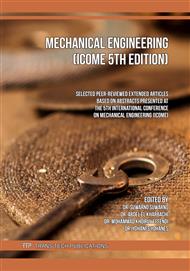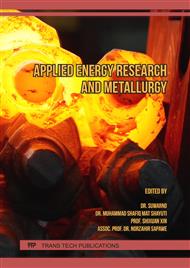p.3
p.11
p.19
p.25
p.31
p.39
p.49
p.57
p.65
Mechanical Properties, Microstructural, and Deep Drawing Formability Analysis on the Annealed CuZn35 Brass Alloy for Cartridge Application
Abstract:
Deep drawing has become the most general method in cartridge manufacturing process which use brass alloy as the main component. To perform deep drawing on this type of alloy, there are several physical and mechanical properties re-quired, especially the ductility and hardness. In this paper, the CuZn35 brass alloy, which still does not fulfill the requirements, had been annealed in the several annealing parameters (holding time and annealing temperature) to achieve the re-quired properties. It also discussed the microstructure evolution in every annealing parameter and the affiliation to its mechanical properties. The temperature annealing process of CuZn35 brass alloy was conducted in 300, 400, 500, and 600°C for 60 minutes. Then, the heat-treated product will be observed to get the composition, microstructure, hardness, strength, and also deep drawing formability. The-ꞵ precipitation was successfully eliminated by annealing process which significantly decrease its hardness and tensile strength whereas the increased grain size affect the ductility.
Info:
Periodical:
Pages:
31-37
Citation:
Online since:
January 2023
Keywords:
Price:
Сopyright:
© 2023 Trans Tech Publications Ltd. All Rights Reserved
Share:
Citation:



